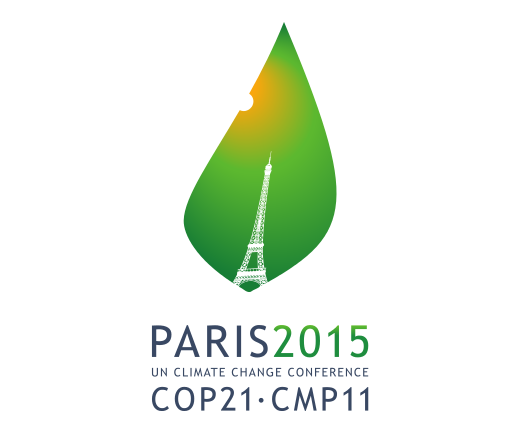
TEN YEARS TO ACT
At the Paris climate conference (COP21) in 2015, 195 countries joined forces to adopt the first-ever global climate deal to limit global warming to well below 2°C, compared with pre-industrial levels.
A recent IPCC Special Report however suggests that even more needs to be done. Global warming must be limited to below 1.5°C to avoid irreversible planetary damage and to allow a new balanced planetary position to emerge.
How? Through Net zero emissions.
Taking advantage of the absorption capacity of our oceans and biosphere to counterbalance the world’s GHG emissions.
Our forests. Oceans. The soil. These natural carbon sinks can and must be harnessed.
FOR COFFEE FARMERS,
CLIMATE CHANGE IS NOW
In the regions where Nespresso sources coffee, farmers already see climate change realities first-hand and the impacts they have on coffee quality, yields and their own livelihoods. Variable climatic conditions reduce productivity, either through drought, or as a result of more humid conditions which allow pests and diseases to take hold. In fact, scientists at the Royal Botanic Gardens, Kew, predict that climate change will “cut the global area suitable for coffee production by as much as 50 per cent by 2050.”
Adapting farmers to this new reality by strengthening their resilience and ensuring that everyone operates within the limits of our planet must be part of the climate equation.
DECARBONISING OUR VALUE CHAIN
Removing or reducing the use of fossil fuels and by-products from our value chain must be prioritised. Not only in the operations we control but also upstream and downstream, in areas that we do not directly manage.
That's why, since 2009 our efforts have focused on this broader end-to-end approach spanning energy efficiency, the use of renewables, the circular use of materials, plus industrial and agricultural low carbon practices.
This is what really matters if we want to take positive strides towards net zero emissions and becoming a carbon-neutral company. Our climate roadmap would not be comprehensive without an attempt to bridge these efforts with the need for adaptation. This is what nature allows us to do.
NATURE PROVIDES AN UNDERUTILISED OPPORTUNITY TO ACT
Trees sequester carbon – absorbing it from the atmosphere. This means they offer a scalable and practical opportunity to act as a nature-based solution to counteract climate change.
Coffee actually originates from the humid, tropical forests in southern Ethiopia and South Sudan. It flourishes when grown under shade. By investing in tree planting within coffee farms and the surrounding landscapes, we are taking local actions that can translate into global impacts.
Trees bring other benefits too. They stabilise ecosystems by storing water, protecting soil, circulating soil nutrients and enriching biodiversity – as well as offering new income opportunities to farmers through the sale of timber and fruits.
This is a holistic approach to climate action.
Building resilience across communities and the supply chain while restoring the ecosystems our business depends on.
Nature4climate, 2018 Global Climate Action Summit in San Francisco.“WE CAN’T ACHIEVE THE PARIS AGREEMENT GOALS WITHOUT CAPTURING AND STORING MORE GREENHOUSE GAS EMISSIONS THROUGH LAND USE. NATURE IS #THEFORGOTTENSOLUTION THAT CAN HELP ACHIEVE THIS. IT’S SCALABLE, AFFORDABLE & AVAILABLE NOW.”
INSETTING UNLOCKS INVESTMENTS INTO NATURE
Using trees in this way, for agriculture, enables the carbon compensation of our company emissions. This approach – insetting – is followed by members of the International Platform for Insetting. It generates positive impacts directly within the business value chain.
Insetting is much broader than just a compensatory approach. It unlocks the financial mechanism to invest in nature-based climate solutions with powerful ripple effects: capturing carbon from the atmosphere and transitioning agriculture to agroecology systems – which enable low carbon practices.
In practical terms, the insetting investments translate into the carbon price required to balance the remaining emissions we cannot reduce.
To credibly account for the value chain interventions financed through insetting, we carried out a verification process against the Insetting Performance Standard. We have also joined the Value Change Programme, led by Gold Standard. Following their guidance will allow us to report on emission reductions against performance targets, in line with common accounting frameworks, like the GHG Protocol.
CHAMPIONING A REGENERATIVE FUTURE
Raising awareness and engaging stakeholders in the issues facing our planet is a responsibility we take seriously. In conferences, webinars and other public conversations, we are actively promoting insetting as a solution for the private sector to achieve both net zero emissions and meaningful change in their value chains.
“WHATEVER THE FUTURE HOLDS, ADVOCATING NATURE-BASED SOLUTIONS THAT COLLECT AND STORE CARBON, AND CONTINUING TO HELP THE MOST FRAGILE COMMUNITIES ADAPT TO CLIMATE CHANGE, WILL REMAIN AT THE HEART OF OUR APPROACH.”
Guillaume Le Cunff, CEO Zone Europe, Nestlé
This article uses images subject to copyright © Elegante and PUR
Article updated in: October 2020.

